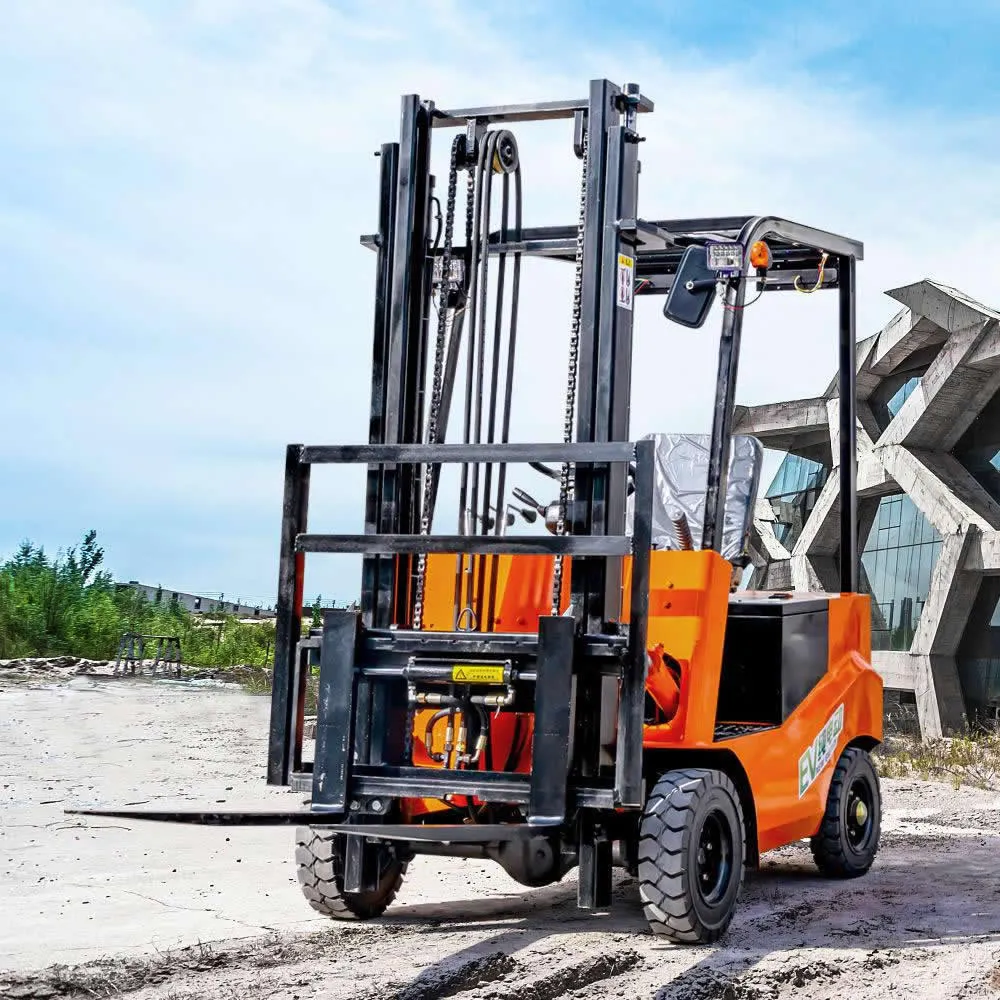
According to 2024 data from the International Logistics Equipment Association (ILEA), regularly maintained forklifts can reduce failure rates by 47% and extend their service life by 5-8 years. This article applies to 3-10 ton internal combustion and electric forklifts and covers maintenance plans for different climates, including Europe, America, and Southeast Asia.
Safety: Routinely inspect key components such as brakes, steering, and tires to reduce accident risks and ensure operator safety.
Extend Service Life: Follow manufacturer recommendations for regular maintenance to effectively prevent component wear and ensure years of stable operation.
Reduce Wear and Tear Costs: Regular maintenance can avoid high repair costs and unplanned downtime.
Increase Used Value: Forklifts with complete maintenance records are more trustworthy and offer a higher price.
According to domestic standards, forklift maintenance can be divided into daily maintenance, first-level technical maintenance (100 hours), and second-level technical maintenance (500 hours):
Daily Maintenance (per shift/daily)
Cleaning the fork carriage slide, motor, battery, and vents;
Inspecting fasteners (fork carriage support, chain screws, wheel bolts, etc.);
Checking braking, steering flexibility, and oil leaks;
Removing oil filter sediment.
First-level Technical Maintenance (≈100 hours/≈2 weeks)
In addition to completing daily maintenance tasks, the following are added:
Checking cylinder pressure and valve clearance; Adjusting and lubricating the thermostat, reversing valve, hydraulic system, and transmission functions;
Replacing the oil filter and diesel filter; Inspecting the fan belt; and Road test performance testing.
Secondary technical maintenance (≈500 hours/≈quarterly) In addition to the above maintenance items, secondary technical maintenance also includes: Deep cleaning of the fuel tank and pipelines, gearbox, steering system, brakes and wheel hub components; Disassembly and adjustment of the transmission, steering axle, main reducer, hydraulic cylinder seal, etc.; Tire rotation and tire pressure inspection; Electro-hydraulic specific gravity, electrical components, instrumentation and safety switch inspection and calibration, etc.
(1) Pre-shift/daily inspection Follow OSHA standard 15 inspection items: Check for abnormalities in forks, chains, hydraulic pipelines; Check whether the levels of hydraulic oil, coolant, engine oil, etc. are within the standard range; Operate and test whether the brake, steering, alarm, light and other functions are normal. (2) Monthly/100-hour maintenance
Lubricate hinges and guide rails; remove dust and impurities and replace air filters; clean oil circuits and hydraulic systems;
Check tires for wear, cracks, or bulges and replace them promptly.
(3) Every 1,000 hours/quarterly to annual maintenance
Replace hydraulic oil and filters regularly (recommended every 1,000 hours); check consumable parts such as oil seals and piston rods;
Rebuilding seals and replacing consumables can help reduce the probability of unplanned downtime.
(1) Daily mandatory inspection "3-minute safety checklist"
Hydraulic oil level inspection (ISO VG46 standard oil is recommended);
Tire wear monitoring (solid tire/pneumatic tire differentiated treatment);
Dashboard warning light self-test (with 12 fault code interpretations);
(2) Weekly deep maintenance items
|
System Module |
Key points of operation |
Recommended tools |
|
Drivetrain |
Chain lubrication (grease suitable for -35℃~50℃) |
Pressure grease gun |
|
Braking system |
Brake pad clearance adjustment (±0.5mm tolerance) |
Laser rangefinder |
(3) Seasonal special maintenance
High temperature environment: battery electrolyte density adjustment (1.26-1.28g/cm³);
Extremely cold area: fuel anti-condensate addition ratio (1:1000 at -20℃);
Establish a maintenance system: clarify the project requirements, record content and acceptance process for each shift, month and quarter.
Professional qualification requirements: Maintenance and repair must be performed by personnel with special equipment operation qualifications to ensure standardization and compliance.
Equipment archives and record tracking: Establish maintenance archives, maintenance logs, and inspection reports to facilitate tracking and future review.
Consider maintenance contract services: including "Preventive" and "Full Maintenance," with options tailored to the age and frequency of use.
We understand the core value of every forklift in international freight, port terminals, and warehousing and logistics. Therefore, we provide you with global standard forklift maintenance services and supporting solutions. These services range from routine inspections and scheduled lubrication maintenance to major technical inspections and replacements, ensuring your equipment always operates in high-quality, safe, and stable conditions.
Advantages of Choosing Us:
Our professionally qualified technical team implements internationally standardized maintenance procedures;
Utilizes a CMMS management system for automated maintenance reminders and report generation;
We offer customized "Planned Maintenance" and "Full Maintenance" contract services for easier budgeting and long-term maintenance management;
We offer international export support, providing maintenance manuals, parts guides, and technical support to help global customers maximize forklift performance and lifespan.
Avoid accumulation of dust and debris, and keep the electrical system of your electric forklift away from humid environments.
Batteries should be maintained according to regulations to prevent prolonged battery drain and extend battery life.
Before operation, check that the lights, signals, wipers, brakes, and alarms are functioning properly to ensure a safe and orderly working environment.
By establishing a clear forklift maintenance system, regularly performing different levels of maintenance tasks, and leveraging a professional team and modern management systems, you can:
Significantly extend the service life of your forklift and reduce the rate of major failures;
Ensure safe and compliant operation, meeting domestic and international regulatory standards;
Reduce maintenance costs and increase the secondary use value of your equipment;
Provide reliable technical support and service guarantees for our international customers.
If you have any questions about construction forklift maintenance, please contact us for customized forklift maintenance plans, repair services, or export technical support manuals to safeguard your construction forklift.